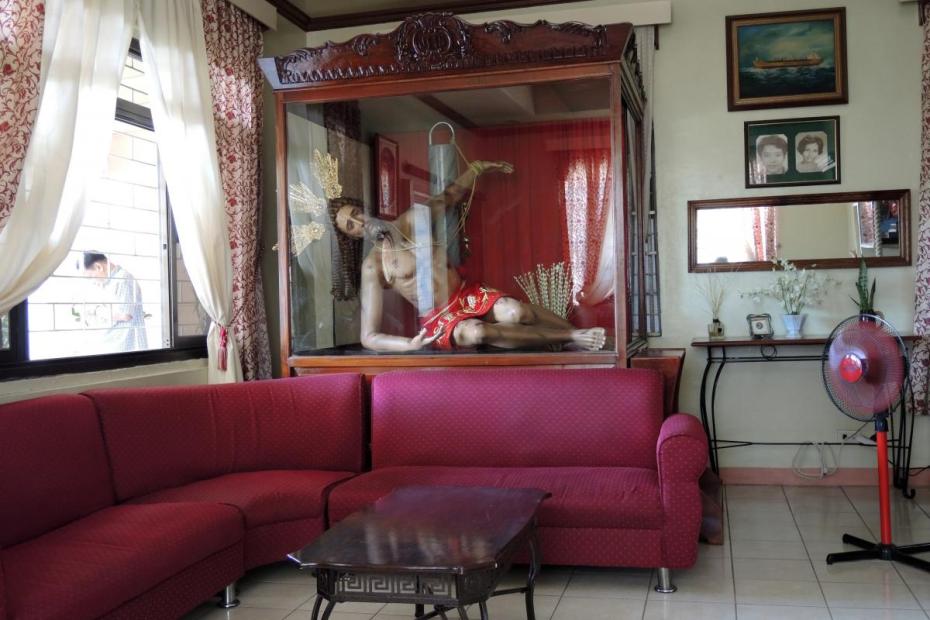Processions are a significant part of Filipino Catholic life, no less so during Holy Week. In Bustos, Bulacan, north of Manila, Holy Wednesday and Good Friday are marked with significant processions. Many members of the community are owners and custodians of large caros, holy statues that are processed on a carozza in the procession. During the year, these are kept in devotees’ homes. Carozza owners and parishes work together to make the procession an organized and a solemn event.
The procession on Holy Wednesday is like the Via Dolorosa (the name of the street in the old city of Jerusalem, the path that Jesus walked carrying His cross on the way to His crucifixion) or the Via Crucis and The Stations of the Cross. The images and scenes depict the paschal mystery of Jesus Christ. As early as 3 p.m., the caro owners start to gather with their lavishly decorated carozza around the courtyard of Sto. Niño Parish in Bustos, Bulacan. The procession begins after the 5 p.m. Mass. Some images are centuries old family heirlooms, including images of Mary Magdalene holding a bottle of perfume representing the one she used to clean the feet of Jesus, Veronica holding a veil used to wipe the bloodied face of Jesus, Mary Salome holding incense used during the burial, Mary Jacobe holding a broom used to clean the tomb of Jesus, and Saint John the Evangelist. Other traditional images included the Nazareno (Jesus carrying the Cross), Santong Gapos (Jesus being led to trial), Angustia (Jesus in anguish) and the Santo Entierro (the dead body of Jesus laid out on a bier). The image of Saint Peter is the first in line because he is the gatekeeper who holds the keys to heaven. Behind him is the Mater Dolorosa (Mother of Sorrow) followed by a band playing solemn music. The procession traverses the main roads of four barangays before heading back to the church, where the images are blessed by the parish priest.
On Good Friday, the parish commemorates the Seven Last Words of Jesus from noon until 3 p.m., the hour Jesus died on the Cross. The ceremony of Jesus’ descent from the Cross is commemorated in a solemn Good Friday ceremony using only wooden clappers, not songs. The ceremony is followed by a procession of the Santo Entierro. Images of saints and of scenes connected with the Passion are processed and followed by the image of the deceased Christ on a calandra (funeral carriage) with the image of the Mother of Sorrows. The procession also passes through the main road of three barangays and back to church for the final blessings of the images and the devotees. The caro owners proceed to their homes for a large meal together — both a family reunion and a way of thanksgiving for a successful event of professing faith and religiosity.













